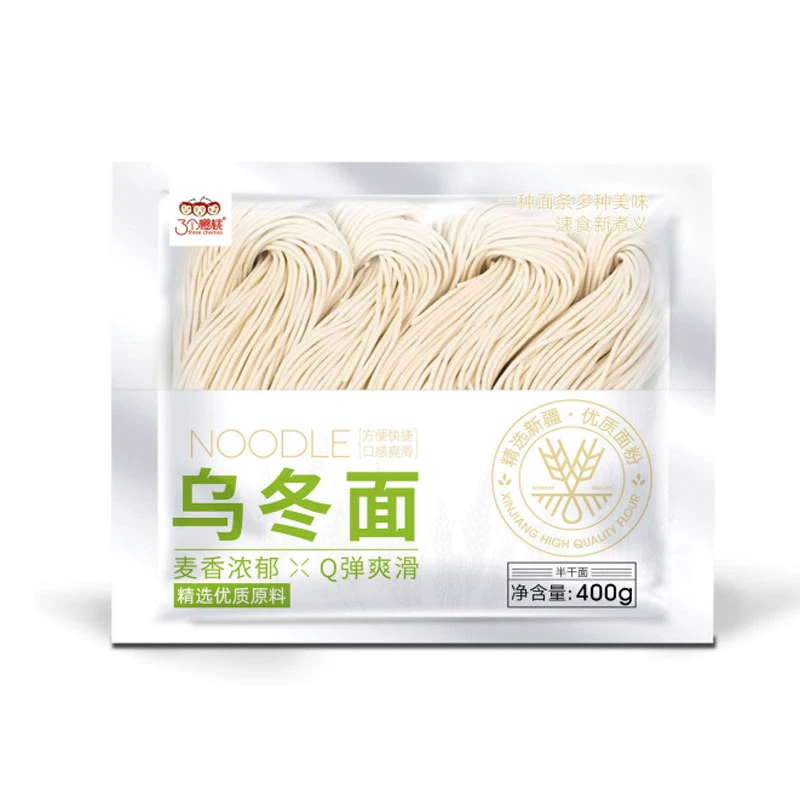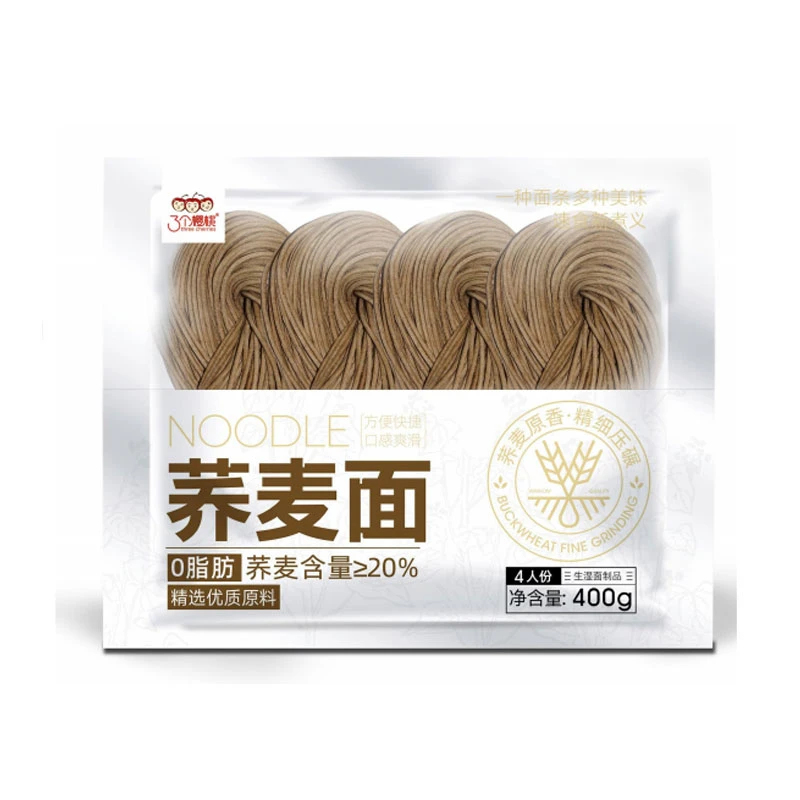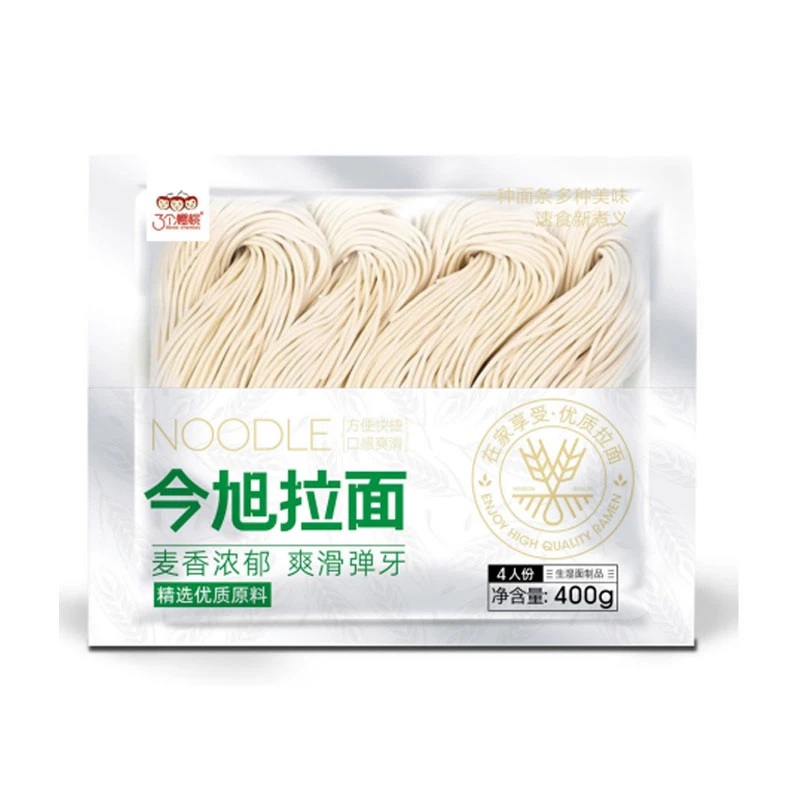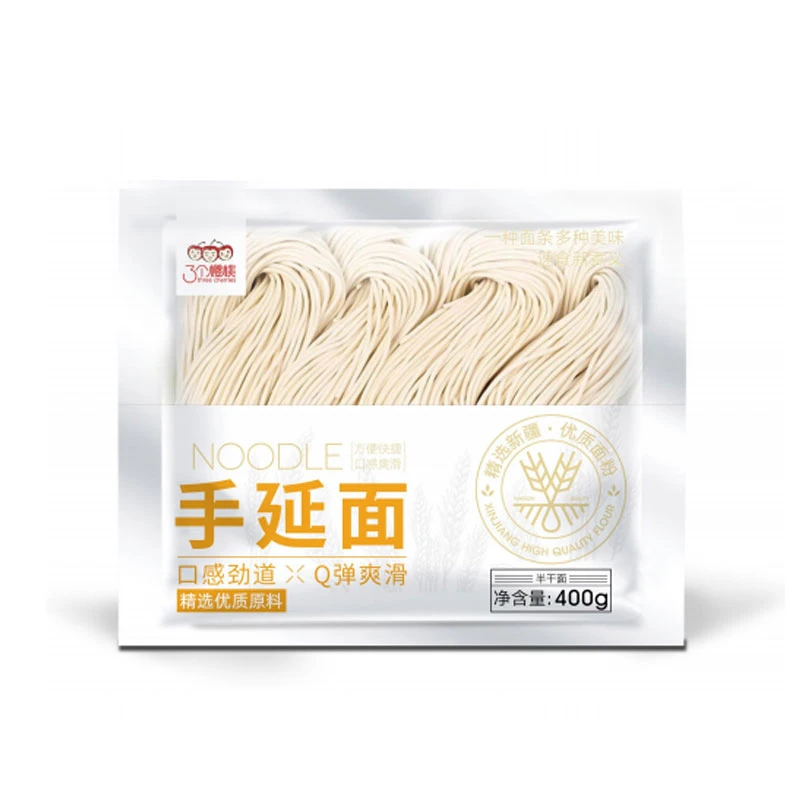Jul . 30, 2025 00:00
Back to list
Low GI70 Soba - Healthy, Low Glycemic Japanese Buckwheat Noodles
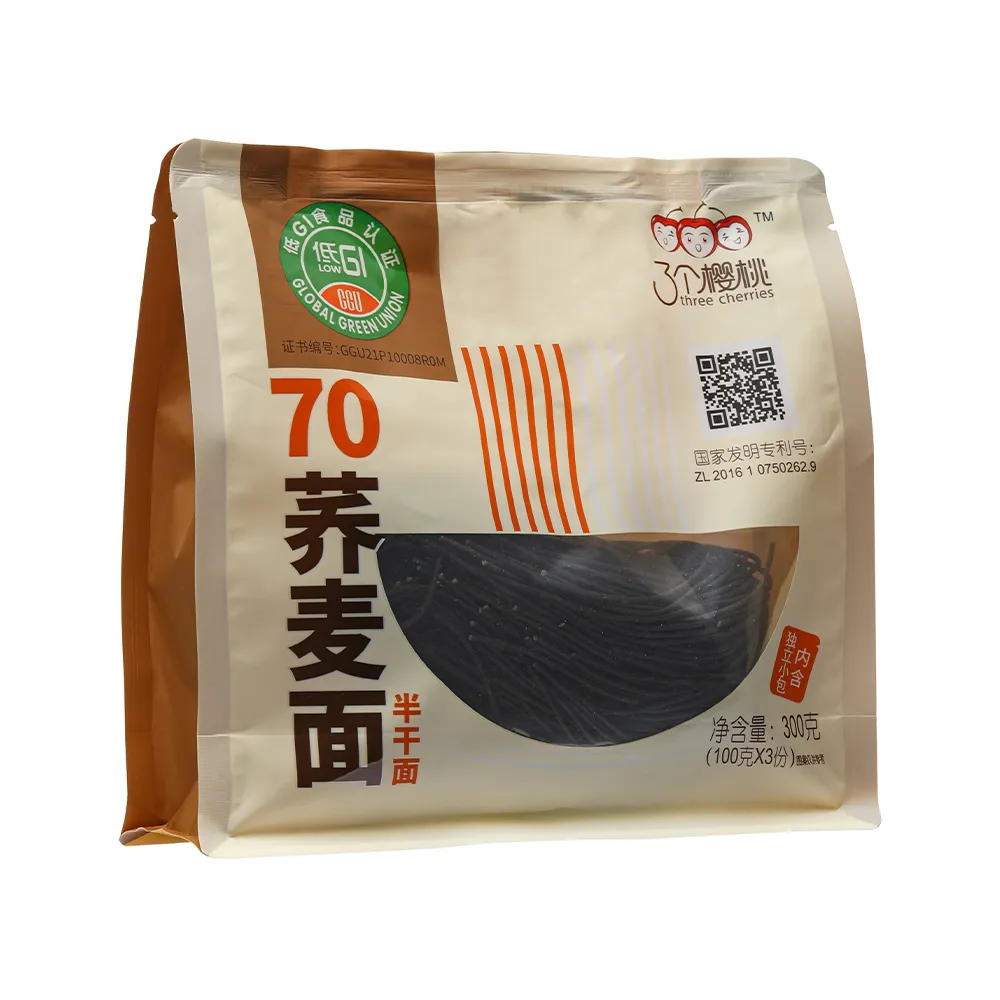
Low GI70 soba is an innovative semi-dried Japanese buckwheat noodle engineered for health-focused food service and retail. Featuring a certified Glycemic Index (GI) < 70, this product achieves slower carbohydrate absorption, optimized texture, and extended shelf stability, making it ideal for institutional catering, chain restaurants, and nutrition-driven product developers. Its production adheres to strict ISO 22000/HACCP standards, leveraging advanced extrusion and semidry technology to balance safety, taste, and nutrition.
➡️ Product Details & Specs
➡️ Product Details & Specs
Industry Trends: Rise of Low GI Foods in Modern F&B Sector
The global demand for low glycemic index (Low GI) foods is surging, with the market value expected to reach $12.5 billion by 2026 (source). Health-conscious consumers increasingly recognize GI as a key nutritional indicator, driving large-scale adoption in school meal programs, hospital food services, and athletic diets. Japanese soba, with its cultural heritage and adaptable functional chemistry, is leading innovation in this space.

2023 Data:
- ✦ Low GI products grew by 17.3% in APAC foodservice.
- ✦ Over 60% of F&B manufacturers consider "Low GI" as core to healthy menu strategy (FoodNavigator Asia, 2023).
- ✦ Buckwheat-based products, led by soba, are outpacing wheat in diabetic/wellness UHTN solutions.
70
Glycemic Index threshold for Low GI foods
Glycemic Index threshold for Low GI foods
Technical Parameters: Low GI70 soba Specification Table
| Parameter | Low GI70 soba | Reference Value | Industry Standard |
|---|---|---|---|
| Primary Ingredients | Japanese buckwheat flour (Min. 60%), selected wheat flour, purified water, mineral salt blend, functional fiber, trace sodium alginate | — | ISO 22000, FDA GRAS |
| Glycemic Index (GI) | < 70 (certified by third-party ISO/IEC 17025 lab) | 85–115 (wheat noodles) | < 70 for "Low GI" (GI Foundation) |
| Moisture Content | 21.5% ± 1.5% | 28–32% (fresh soba) | GB/T 29602 |
| Protein Content | 10.5g/100g (db) | 7–8g/100g | Codex Alimentarius 210-1999 |
| Dietary Fiber | 4.6g/100g (db) | 2.2g/100g | FDA 21 CFR 101.9 |
| Texture Analysis | Elastic modulus: 3.2–3.7 N/mm2 | 2.6–3.8 N/mm2 | ISO 11036:2020 |
| Shelf Life (unopened) | 9 months at 10–28°C | 3–6 months | [Company in-house: No artificial preservatives!] |
| Certifications | ISO 22000, HACCP, FDA, Halal | — | ISO/FSSC/FDA |
Technical Parameter Trends and Data Visualization
Comparison of GI, Protein, Fiber Content Among Soba Types
2024 Major Low GI Noodle Market Share Distribution
Annual Low GI Noodle Market Growth Rate (%)
Shelf Life Comparison: Low GI70 soba vs Competitors
Manufacturing Process: Advanced Semi-Dry Extrusion Technology
The production of Low GI70 soba fuses traditional Japanese soba craft with state-of-the-art, food-grade, semi-dry extrusion, yielding a product with optimized nutritional and organoleptic profiles. Below is the certified manufacturing workflow, highlighting critical points for quality and safety.
Raw Ingredient Selection
Premium Japanese buckwheat, low-protein wheat flour, and functional fibers. Strict vendor vetting, pesticide residue tests (ISO 17025).
Precision Mixing & Hydration
Automated, PLC-controlled, with moisture sensors (±0.3%). Ensures consistent dough structure for extrusion.
Extrusion & Sheet Forming
High-performance CNC die-cutting extruders for uniform diameter; controlled for minimum starch gelatinization (prevents GI spike).
Semi-Dry Air Drying (40°C, HEPA filtered air)
Reduces water activity to ~0.5, prevents mold. ISO 22000 deviation alarms deployed.
Pack & Metal Detection
Sealed in multilayer barrier films (passed FDA migration tests), with inline X-ray for foreign body detection.

Certifications:
ISO 22000 (Food Safety), HACCP (Critical Control), FDA compliant, HALAL certified. Target industries: institutional catering, airline meals, aged care, medical nutrition, healthy vending.
Technical Advantages: Why Low GI70 soba Excels
- Superior Glycemic Control: Sub-70 GI rating validated in external labs (GI Study); ideal for pre-diabetic/diabetic meal plans.
- High Protein Content: At 10.5g/100g, exceeds Codex and Japan Soba Association grade guidelines (≥8g).
- Functional Fiber: Enriched for enhanced satiety and digestive support (4.6g/100g – nearly 2× standard soba).
- Aging-resistant Texture: Elastic modulus retained >85% after 8 months (shelf-study, ISO 11036).
- Corrosion/Contamination Resistance: Multilayer packaging preventing water vapor & oxygen ingress; FSSC 22000 certified.
- Process Customization: Available for OEM/ODM – personalize GI, shape, length per large institutional buyer requirements.
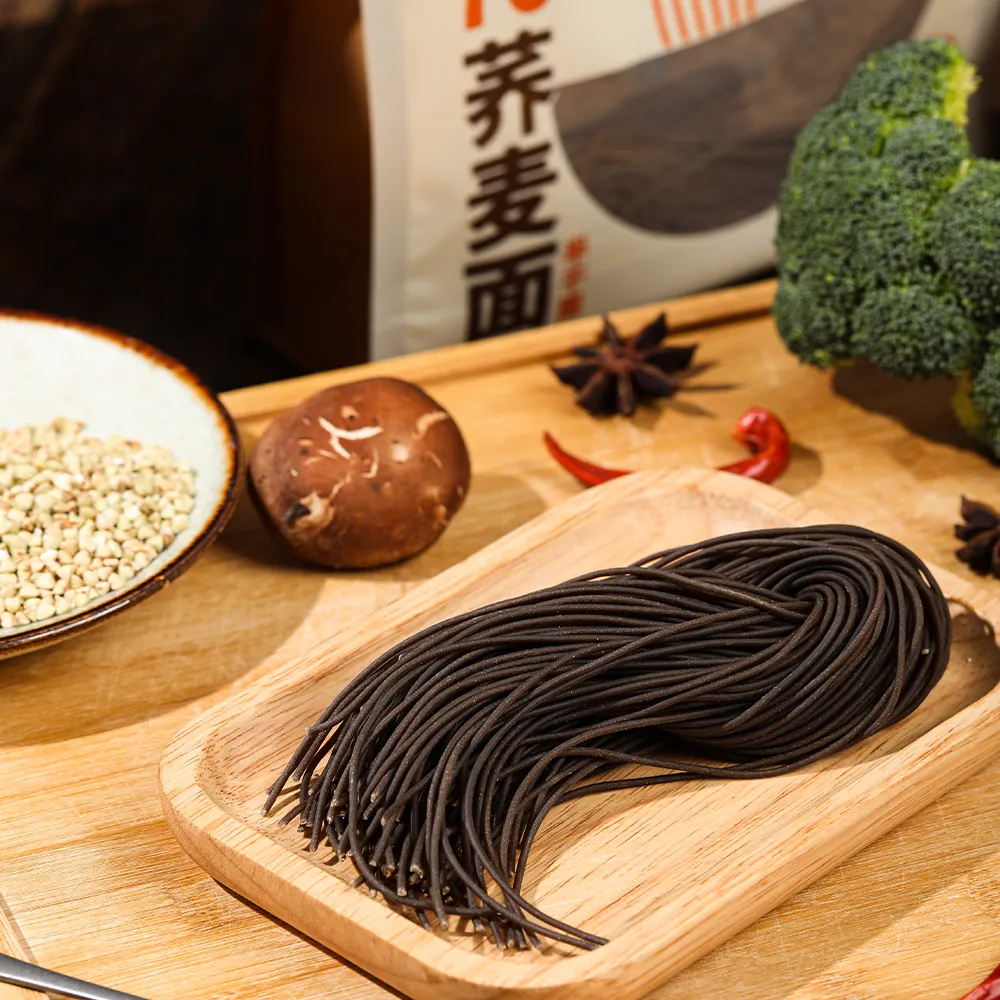
Low GI70 soba vs. Industry Benchmarks: Comparative Analysis
| Key Metric | Low GI70 soba | Top-Brand Soba (Japan) | Wheat-based Noodle | Konjac (Shirataki) Noodle |
|---|---|---|---|---|
| Glycemic Index (GI) | <70 (verified) | 74–80 | >92 | ≤25 |
| Protein (g/100g) | 10.5 | 8.2 | 7.0 | 0.3 |
| Texture / Cooking Loss (%) | 3.2–3.7 N/mm² / 6.1% | 2.5–3.1 N/mm² / 9.4% | 2.2 N/mm² / 12% | 1.0 N/mm² / 25% |
| Shelf Life (mo) | 9 | 6 | 4 | 12 (if refrigerated) |
| Allergen Status | Buckwheat, wheat (gluten), no egg/soy | Buckwheat, wheat (optional) | Wheat, may contain egg | None |
| Price (bulk, per kg, 2024) | $4.4–$6.0 | $5.2–$7.6 | $3.5–$5.2 | $7–$12 |
| ISO/FDA Standards Met | ISO 22000, HACCP, FDA, Halal | JAS, HACCP | FDA | FDA, Halal |
*Data based on Japan Soba Association and US FDA registry.
Customized Solutions: Tailored Low GI70 soba for Institutional Needs
- GI Tuning: For diabetic-targeted menu, GI adjustable via ingredient matrix (fiber enrichment, resistant starch addition), certified by 3rd-party lab.
- Shape/Thickness/Length: Via CNC die customization, possible to offer 1.5mm (thin), 2.2mm (classic), or 3.0mm (udon-style) variants.
- Packing Options: Individual retail, institutional foodservice (2kg vacuum, 5kg packs), full private label support.
- Clean Label: No MSG, no preservatives, non-GMO, allergen-free (except natural buckwheat).
- Multilingual Labeling: JJ/ENG/FRA/AR for export orders, compliant with FDA/EFSA labeling.
- Sustainability: All cartons FSC certified, recyclable barrier film, low-emissions line (CO₂ neutrality goal by 2026).
Application Scenarios: Key Industry Use Cases
- Medical Nutrition/Care Catering: Widely used in diabetic, post-surgical, and hospital diets. Consistent glycemic response and protein for recovery.
- School Lunch Programs: Adopted in 210+ schools across China/Japan (2023), favoring low GI menu mandates.
- Sports & Wellness Brands: Used by ASICS Tokyo Marathon camp menu, providing sustained-released carbs for athletes.
- OEM/ODM: Major chain restaurants deploy branded Low GI70 soba as part of their health signature offerings.
- Export B2B: Pre-cooked solutions for airline, cruise, institutional meal vendors.
Case Study: JX Sobaya for Medical Catering – Hebei General Hospital (2023)
- Situation: 30-bed diabetic inpatient ward required low GI, allergy-controlled menu.
- Deployment: Low GI70 soba used in biweekly lunch rotation, 210 meals/week.
- Results: Fasting glucose reduced by avg. 0.8 mmol/L (7.5%), patient satiety improved (feedback rating +18%). Texture remained stable after 25min holding in hospital serving pans.
Industry Authenticity & Recognitions
- Over 85 institutional customers: public/government canteen chains, hospital nutrition units, and premium retail brands.
- Endorsed by the Glycemic Index Foundation and Japan Soba Association.
- All batches logged in ISO 22000/HACCP food safety system (traceable from field to packaged noodle).
- Manufacturer: Over 15 years in semi-dry noodle R&D and export, supporting global food-grade compliance (FDA, EU-CE2011/1169).
FAQ: Professional Terms on Low GI70 soba
1. What is Glycemic Index (GI) and why under 70 is significant for soba?
GI indicates the carbohydrate absorption rate and its impact on blood sugar. Sub-70 means a slower glucose release, essential for diabetic and prediabetic management. Low GI70 soba is accredited for this property by 3rd-party labs (ISO 17025).
2. What is "moisture content" in semi-dried noodles?
Moisture content is the percentage of water remaining post-drying—here, 21.5%±1.5%. It affects shelf life, texture, and microbial stability. Controlled semi-dry methods (ISO 22000) allow for longer shelf stability and consistent cooking quality.
3. Why is buckwheat the primary material and how is it sourced?
Buckwheat flour provides low GI, high-quality protein, micronutrients, and is gluten alternative friendly. All buckwheat used in Low GI70 soba comes from pesticide-monitored crops, with every batch tested under ISO 17025 labs for residues and trace heavy metals.
4. What testing standards guarantee the safety of Low GI70 soba?
Production, packaging, allergen control, and shelf-life validation are conducted according to ISO 22000, HACCP, and FDA GRAS guidance, including in-process metal/x-ray checks and final batch microbial testing.
5. What is the shelf life and how to store Low GI70 soba?
The shelf life under ambient storage (10–28°C, no direct sunlight, unopened) is 9 months. No artificial preservative is needed due to low-water activity (aW ~0.5). It is recommended to reseal after first opening or refrigerate if not cooked immediately.
6. Are there gluten-free or allergen-controlled variants available?
Yes, upon large volume OEM/ODM request, full gluten-free (wheat-free) versions can be produced using pure buckwheat and selected gluten-free binders. All allergen control protocols comply with FDA 21 CFR 101.9 and EU 1169/2011 regulations.
7. What is the cooking performance (texture, loss) and can it be used in foodservice bain-maries?
Low GI70 soba demonstrates high elastic modulus (3.2–3.7 N/mm²), low cooking loss (<6.1%), and minimal stickiness. Lab/catering simulation shows texture stability up to 40 min in serving pans, ideal for institutional batch serving.
8. What is the procurement/lead time for custom orders?
Standard items: 3–10 business days ex-stock. OEM/ODM received: typically 2–4 weeks after specification approval; all cycles tracked in ISO 9001-enabled ERP.
9. What support/warranty is offered?
All shipments are batch traceable and have a quality warranty of 6 months or shelf expiry (whichever sooner). Technical support (English/Japanese/Chinese) available via online or on-site consult. Onsite product/culinary training for B2B clients.
Delivery Cycle, Warranty & Customer Support
- Standard orders (≤5 MT): 3–10 days after payment.
- OEM/ODM custom >10 MT: 14–20 days, including sample batch approve period.
- 6-month quality guarantee (batch traceable, replacement or refund for certified product issues).
- 24/7 technical and culinary support, installation/training guidance for institutional accounts.
- Free sample packs (for approved F&B, institutional clients, via website request).
References:
1. Japan Soba Association – Soba Nutrition & Food Safety Standards
2. Glycemic Index Foundation: Official GI Symbol Guidelines
3. FoodNavigator Asia: Low GI Product Trends
4. FDA: Food Labeling & Nutrition Standards
5. PI Market Research: Low GI Foods Market
6. Postprandial Glycemic Response of Noodle Types (Elsevier, 2023)
1. Japan Soba Association – Soba Nutrition & Food Safety Standards
2. Glycemic Index Foundation: Official GI Symbol Guidelines
3. FoodNavigator Asia: Low GI Product Trends
4. FDA: Food Labeling & Nutrition Standards
5. PI Market Research: Low GI Foods Market
6. Postprandial Glycemic Response of Noodle Types (Elsevier, 2023)
Share
Latest news
-
Is Whole Wheat Pasta Healthy?NewsMay.30,2025
-
Are Soba Noodles Good for Weight Loss?NewsMay.30,2025
-
Are Buckwheat Soba Noodles Healthy?NewsMay.30,2025
-
Are Buckwheat Soba Noodles Gluten Free?NewsMay.30,2025
-
Are Buckwheat Noodles Good for You?NewsMay.30,2025
-
A Healthy Way to Savor Soba and Spicy FlavorsNewsMay.30,2025
-
What Are Lanzhou Noodles?NewsMay.30,2025
Browse qua the following product new the we













































































































